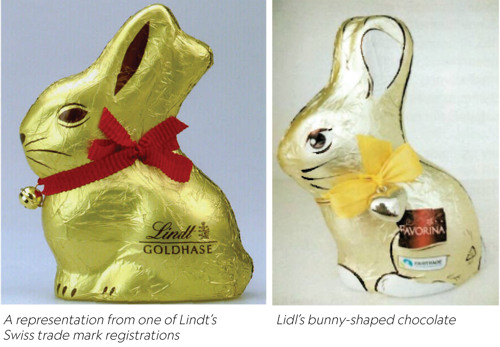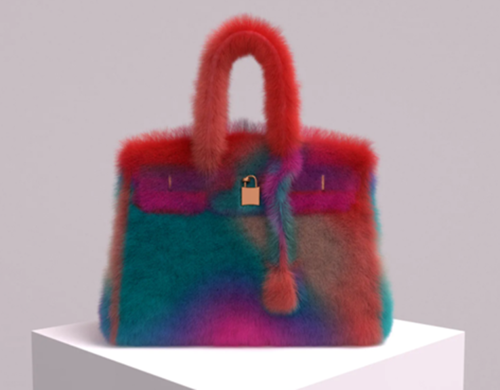13/12/2022·5 min read
IP and Marketing Law Christmas Crackers 2022

As we head into the silly season, it is time to look back on some of the unusual and interesting intellectual property and marketing law news that hit the headlines in 2022.
Cheesy come, cheesy go
Negotiations concluded this year for a New Zealand-European Union Free Trade Agreement (NZ-EU FTA) that, amongst other things, allows for the protection in New Zealand of over 2,000 EU geographical indications for a variety of food and beverage products, including feta, gruyere and parmesan. Once the protection takes effect in New Zealand, it will only be possible to use these terms if the items conform to the protected description and are manufactured in the relevant EU region.
This has got up the noses of New Zealand cheesemakers who have used such terms descriptively for many years. It also remains to b(ri)e seen what impact this will have on purchasing decisions for Kiwi consumers who have become accustomed to generic use.
New Zealand businesses that have used the terms gruyere and parmesan for at least five years before the NZ-EU FTA enters into force will be able to continue using the terms. But any new non-compliant uses of gruyere and parmesan in New Zealand will be prohibited.
For use of the term feta, the NZ-EU FTA provides a nine-year period to phase out non-compliant use, allowing time for New Zealand businesses to ‘whey’ up alternative names to use for their products.
Something smelly going on here
The NZ-EU FTA was not the only ‘gouda’ news for EU cheesemakers. Consorzio per la Tutela del Formaggio Gorgonzola (Consortium for the Protection of Gorgonzola Cheese) (the Consorzio) also successfully registered gorgonzola as a certification mark in New Zealand.
The Consorzio’s certification mark application was opposed by Dairy Companies Association of New Zealand (the Association). The Association argued that gorgonzola is a generic term for a type of blue cheese, that it should remain free for all New Zealand traders to use, and that granting registration of the certification mark would be “the thin edge of the cheese wedge”.
In defence, the Consorzio argued that gorgonzola is “a specific type of cheese, produced in a particular region of Italy using traditional methods, which cannot be exactly replicated elsewhere”.
The Consorzio prevailed, with the Assistant Commissioner finding that gorgonzola had acquired distinctiveness and was capable of distinguishing goods certified by the Consorzio.
As it happens, gorgonzola is also on the list of EU geographical indications to be protected in New Zealand under the NZ-EU FTA. This looks like a case of double-cream for the Consorzio.
Bad hare day
Lindt’s bunny-shaped chocolates have become a staple Easter treat, recognisable by their shape, gold foil wrapping and bow with a bell.
Seemingly in an attempt to burrow into Lindt’s success, German retailer Lidl launched its own range of bunny-shaped chocolates that bore a resemblance to Lindt’s, also featuring a gold foil wrapping and bow with a bell.
Lindt took issue with Lidl’s copyrabbit, and issued proceedings in the Commercial Court of Switzerland. Lindt argued that Lidl’s bunny infringed Lindt’s Swiss registrations for three-dimensional trade marks relating to its bunny.


Lindt was unsuccessful in the first instance. However, in an appeal decision issued this year, Switzerland’s Federal Supreme Court told Lidl’s chocolate bunny to bounce. The court found that the distinctiveness of Lindt’s trade marks had increased over the years and that there was a likelihood of confusion caused by Lidl’s bunny.
The court disagreed with Lidl’s argument that destruction of the infringing bunnies would be a disproportionate remedy, but the case was referred back to the lower court for assessment of the enforcement measures. Lidl must be hopping mad.
Doing nice, and definitely not lewd, things to the planet
New Zealand media business Stuff got in hot water over an advertisement on its website featuring the statement “Unf#*king the planet was one thing we couldn’t stay impartial on. So now we’re B Corp Certified”. New Zealand’s Advertising Standards Authority (ASA) upheld two complaints relating to the advertisement, finding that it would be likely to cause widespread offence.
The ASA’s Complaints Board traversed a number of earlier ASA decisions in coming to a verdict on the matter. This included contemplating decisions relating to:
- “How Effen Good”, featured in a billboard advertisement for Effen Vodka, which the Board did not uphold two complaints in relation to;
-
an employee affirming “ken oath” in a television advertisement for Kennards Hire, a machinery hireage business. The Chair of the Complaints Board ruled that the play on words mitigated its use as a suggested substitute for the colloquial expression of agreement “f*cken oath” (redacted in this article), and did not uphold the complaint relating to the advertisement;
-
the statement “F#K’N Hot Summa! Sale!” used in a store window advertisement for Void Clothing, which the Board upheld a complaint in relation to; and
-
a billboard advertisement for Mad Hueys, a clothing manufacturer, featuring the text “Caught F*CK All Fishing Club” (reported in our 2020 Christmas Crackers). The Board upheld two complaints relating to the advertisement.
In a curious attempt to demonstrate that its advertisement would not cause offence, Stuff cited that the (unredacted) word f*ck was ranked 26th in a New Zealand Broadcasting Standards Authority survey on the most offensive words. However, the Board found that the prominent and deliberate use of “Unf#*king” in Stuff’s advertisement was gratuitous.
Notwithstanding the outcome, we are perplexed about what word actually featured in Stuff’s advertisement. The Board uses “Unf#*ing” and “Unf#*king” interchangeably in its decision. While Stuff’s response says the advertisement featured “Unf#*cking”, but also discusses the terms “Unf#*k” and “Unf#*ck”. We w!ll +herefore ju~t ha>e to let our im@gina#ions consid*r the po$$ibilit!es.
Bag of tricks
Hermès’ Birkin handbags are a well-known status symbol. They typically retail in the tens of thousands of dollars, but special edition Birkin handbags have sold for hundreds of thousands of dollars at auction.
While traditional counterfeiting has been an ongoing issue for luxury brands such as Hermès, a new challenge faced by Hermès was the launch of a range of non-fungible tokens (NFTs) titled “MetaBirkins”. The NFTs, created by an individual, Mason Rothschild, featured images of Birkin-shaped bags in a faux-fur material with different colour and patterns.

Hermès issued proceedings against Rothschild in a New York court, claiming that the sale of the “MetaBirkins” amounted to trade mark infringement, trade mark dilution, cybersquatting and unfair competition.
Rothschild responded by filing a motion to dismiss Hermès’ claim, which Hermès opposed. Rothschild argued, amongst other things, that his “MetaBirkins” were protected by the First Amendment, and that the use of the “MetaBirkins” mark does not explicitly mislead as to the source or content of the work. However, the court found that Hermès’ complaint “includes sufficient allegations that Rothschild entirely intended to associate the “MetaBirkins” mark with the popularity and goodwill of the Hermès’ mark”. The court remarked that Rothschild stated that his “MetaBirkins” were intended “as a tribute to Hermès’ most famous handbag, the Birkin”. Rothschild’s motion to dismiss Hermès’ complaint was therefore denied in the first instance and on appeal.
Both parties have now filed motions for summary judgment. We will wait to see whether this is an open and shut case.
Perhaps they should have run this up the flagpole
The Aboriginal flag has had a somewhat controversial history, with the latest chapter in the saga being a move by the Australian Government to acquire copyright in the flag design.
The Aboriginal flag design was created by Harold Thomas in 1971. Since then, the flag was readily adopted as a symbol for Aboriginal Australians. And in 1995, the Commonwealth of Australia appointed the flag as the “flag of the Aboriginal peoples of Australia”, and proclaimed that the flag was of significance to Australia generally.

Thomas later issued proceedings to clarify authorship of the flag design, which resulted in declarations by the court that Thomas was the author and owner of copyright in the design.
Following attempts by one of Thomas’ commercial licensees to enforce copyright in the flag design, there was a push within the community to have the design made available for general public use. In a positive step, the Australian Government announced this year that it had negotiated a deal to acquire copyright in the work from Thomas. As part of the deal announced, Carroll and Richardson Flagworld would remain the exclusive licensed manufacturer and provider of Aboriginal flags and bunting, and Thomas would retain his moral rights in the design.
However, in a plot twist, questions have been raised over whether copyright in the Aboriginal flag design may now have expired, in which case Thomas’ moral rights would also have expired, and it would negate the ability of the Government to license the copyright. In particular, Australia’s Copyright Act 1968 provides that, where the Commonwealth of Australia is the owner of copyright in an artistic work, the term of copyright is 50 years from after the calendar year in which the work was made. With the Commonwealth of Australia having acquired copyright, and it being more than 50 years after the year in which the flag design was created, this means the flag design is now potentially in the public domain in Australia.
Which way will the wind blow if this ends up in court again?
Until next year
We wish you a safe and happy festive season.
Special thanks to Brooke Crenfeldt-Smith for her assistance in writing this article.







